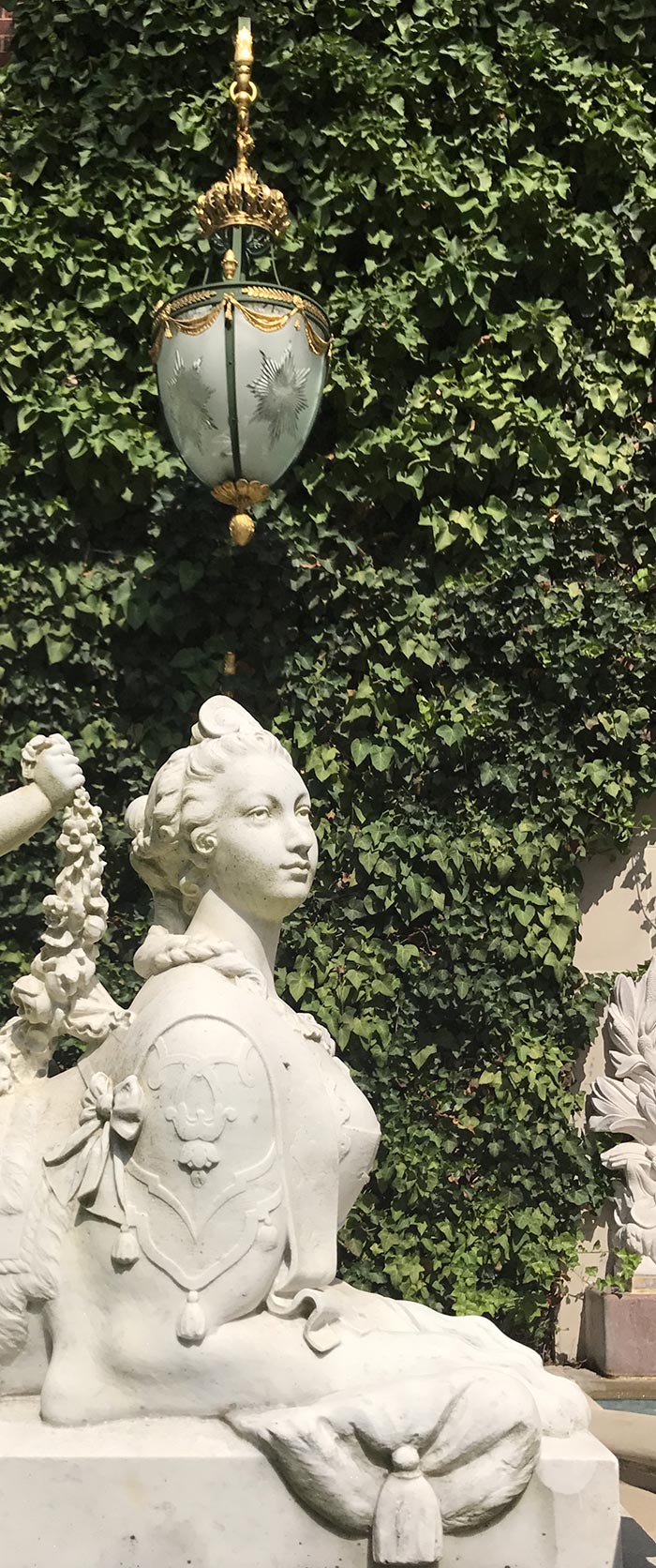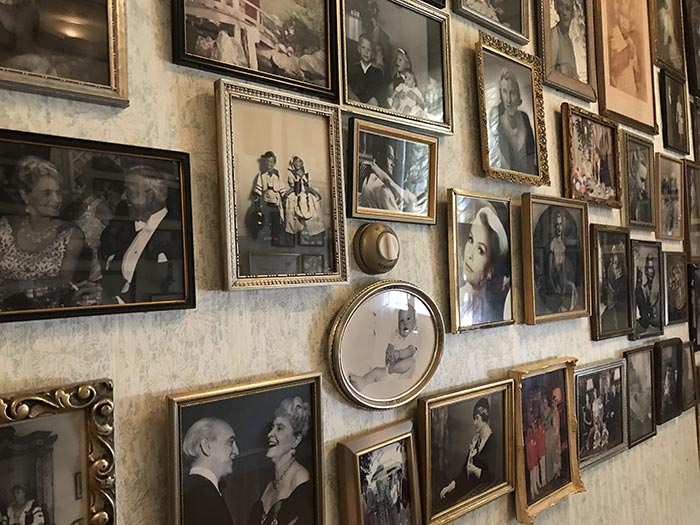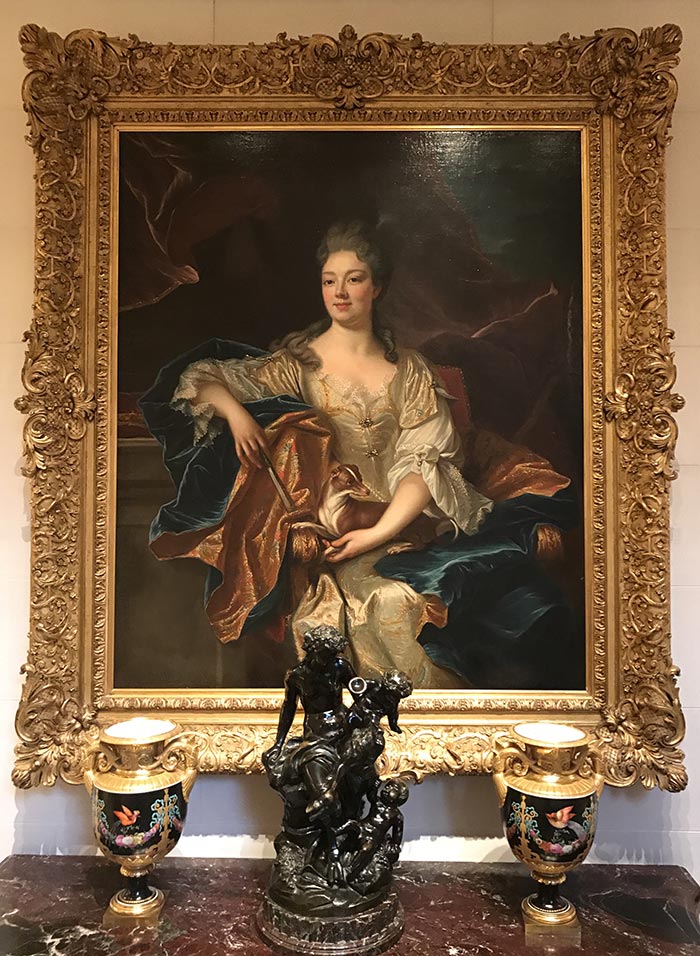Jewelers routes
11 October 2017
Share
Hillwood, the home of Marjorie Merriweather Post
From 1959 onward, this American heiress lived in a Neo-Georgian mansion that she conceived as a museum to be bequeathed to the Smithsonian on her death. It is filled with her collection of decorative arts and jewelry.
This chic and tranquil suburb of Washington was still rural when Marjorie Post acquired this mansion. Typical of the East coast, it is in red brick with a tympanum resting on Doric columns, a vast lawn and an 18th century garden. The sumptuous enclosed park, a forest of rhododendrons, azaleas, magnolias and fir trees protect it from the bustle of the outside world … And plunges the visitor into yet another world.
Extravagant accumulation
Inside the mansion are thousands and thousands of objects: porcelain plates and figurines, glasses, boxes, paintings lining the walls, and vases and frames that sit on the piano and marquetry consoles. Over the majestic staircase is a portrait of Catherine II. As the visit goes along, this accumulation of objects fascinates, oppresses, astonishes and becomes head spinning … Nothing seems to have budged since her time. The bouquets of flowers on the tables are arranged each day according to the archive photos and with flowers from the greenhouse. One expects the heiress to emerge in a cocktail dress, adorned with one of the sumptuous pieces by Cartier jewelry, of which she was their biggest American client.
A colossal fortune
On setting up this “museum”, she had the idea of bequeathing it to the Smithsonian. It is difficult for us mere mortals to imagine the unlimited means available to Marjorie Post. At 27, she was the richest woman in the country when she inherited her father’s fortune, a cereals baron and founder of what would become the General Foods Corporation. With keen business acumen, she invested in the company that invented frozen foods. She led a regal lifestyle along with her contemporaries with boating parties, cocktails, costume balls and such like. She had a number of residences including the Mar-a-Lago property in Palm Beach and the first and the largest New York penthouse of the day in her own 5th Avenue building.
The icon room, Russia in Washington
On the ground floor, any jewelry-lover would linger in this room designed as a cabinet of Russian curiosities to hold small precious objects like chalices, icons, boxes, medals and 80 creations by Karl Fabergé. In the center of the room with its parquet floor in wooden marquetry representing a coat of arms, sit two of these legendary eggs. It is magical to be alone in this room, to be able to closely examine the jeweler’s meticulous and illustrious work. Under a portrait of Nicholas II, one could imagine him offering them to his mother, Alexandra Fedorovna.
The most beautiful private collection of the 20th century
Unlike Daisy Fellowes’ or the Duchess of Windsor’s, this collection was not dispersed after her death. Parts were sold in 1981 and 1982 at Christie’s though, but by the 1960s she had bequeathed the major pieces to the Smithsonian, such as the emerald that had belonged to Maximilian, Marie Antoinette’s earrings, the turquoise diadem of the Empress Marie Louise that is on display in the exhibition, and the blue diamond in the shape of a heart bought only two months earlier from Harry Winston. It was largely thanks to her that the National Gem Collection of the Museum of Mineralogy saw day.
The “Spectacular” exhibition (horizontal slideshow)
At the moment, in the rustic cabin at the bottom of the garden recalling her summer residence in the Adirondacks, are exhibited some twenty exceptional jewelry pieces including:
– a brooch with engraved emeralds, a necklace in sapphires adorned with amethysts and turquoise from Cartier, her jeweler of predilection from the 1920s.
– historical pieces such as the diadem and the necklace that once belonged to the Empress Marie Louise. Passionate and aware that these jewels were investments, she instructed her curator to investigate these royal provenances.
– a tiara in white and yellow diamonds from 1830 given to her by her husband Joseph E. Davies, which is extremely rare because Marjorie Post normally acquired her own jewelry.
Confidential, this house offers a true moment of enchantment in the world of the American aristocracy of the twentieth century.















































